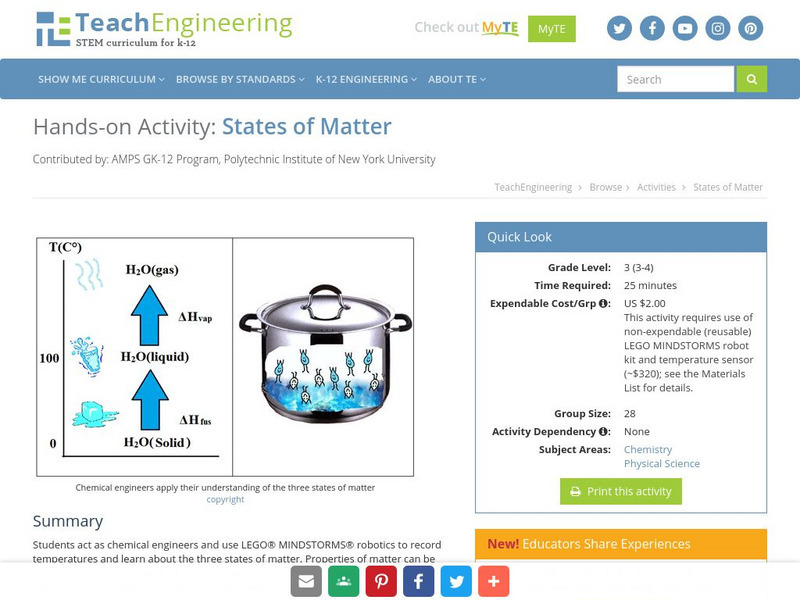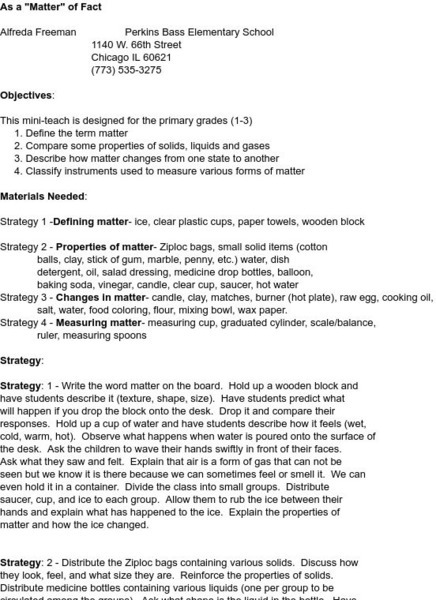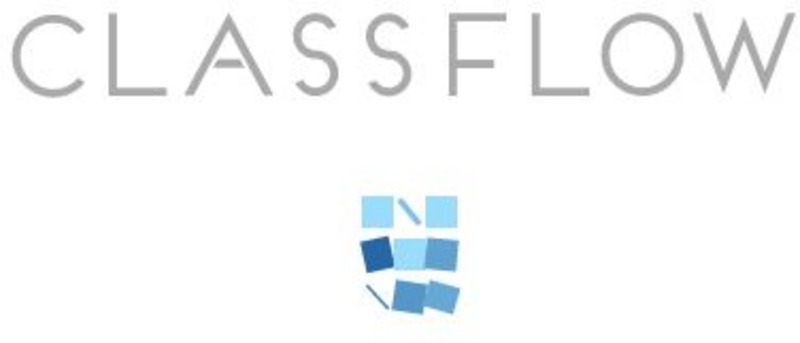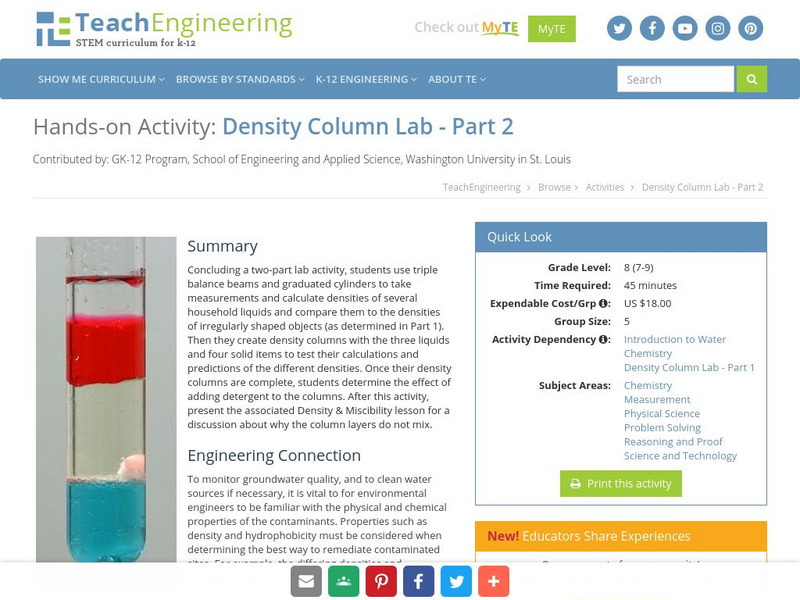TeachEngineering
Teach Engineering: States of Matter
Students act as chemical engineers and use LEGO MINDSTORMS NXT robotics to record temperatures and learn about the three states of matter. Properties of matter can be measured in various ways, including volume, mass, density and...
Science and Mathematics Initiative for Learning Enhancement (SMILE)
Smile: As a "Matter" of Fact
In this lesson plan site, students will define matter and compare properties of solids, liquids and gases.
ClassFlow
Class Flow: Matter
[Free Registration/Login Required] This flipcharts explains the basics of matter. Opportunities for student involvement include measuring solids, identifying matter, and a sorting activity.
Alabama Learning Exchange
Alex: Souper Scooper
This hands-on, inquiry based lesson is an extension of the AMSTI Science Module, Solids and Liquids. Young scholars use nonstandard units to measure beans in a soup mix. Students predict how many beans will be in a scoop. Young scholars...
TeachEngineering
Teach Engineering: Density Column Lab Part 2
Concluding a two-part lab activity, students use triple balance beams and graduated cylinders to take measurements and calculate densities of several household liquids and compare them to the densities of irregularly shaped objects (as...
Curated OER
Friction Is a Force That Moves in an Opposite Direction to Movement.
This resource provides a brief overview of friction. Its' affects on solids, liquids and gases is described with diagrams. An explanation of how friction is measured is included in the discussion. An online quiz can be used to check your...





